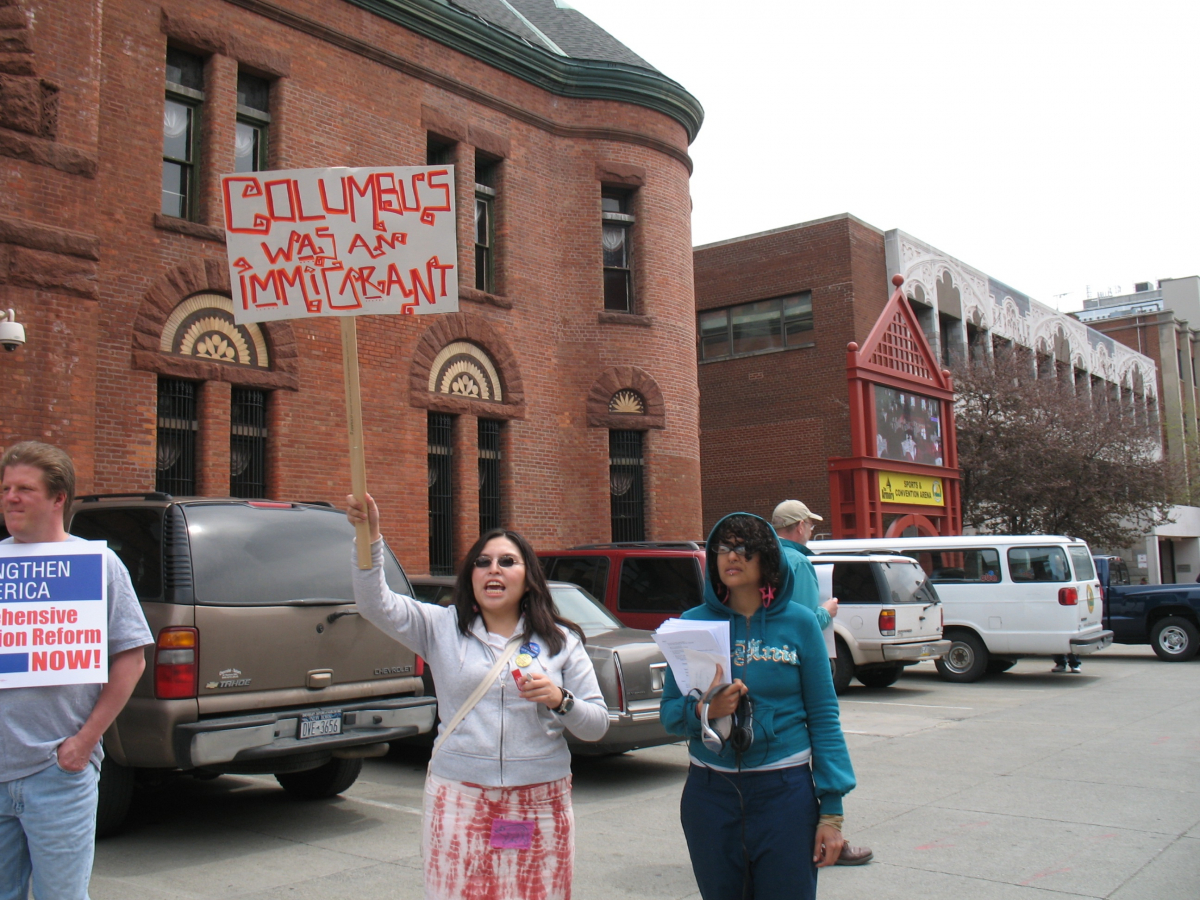'Constituency' Caucuses Can Be Out Front

When New York state made national news two years ago with a flap about driver's licenses for undocumented immigrants, the state AFL-CIO supported the immigrants but wasn't out in front. Neither was another supporter, the Catholic Church. But as chair of the Albany/Capital District chapter of the Labor Council for Latin American Advancement (LCLAA), I was getting media calls every other day. We were it. Together with Jobs with Justice and a local sanctuary group, our LCLAA chapter held two press conferences and a rally in front of the Rensselaer County office building, home to County Clerk Frank Merola. Merola and other local politicians were on national TV bashing immigrants. We were there to say, "Stop stereotyping the undocumented as criminals and terrorists. Issuing driver's licenses will make the roads safer and bring people out of the shadows." And we did all this as an affiliate of the AFL-CIO and Change to Win federations. LCLAA gave us the chance to do grassroots activism within the official structures. LCLAA is one of five "constituency groups" recognized by the AFL-CIO and CTW that serve as independent ethnic, racial, gender, or sexual orientation- based caucuses within the two federations. Arguably four of them owe their existence to the first one, the Coalition of Black Trade Unionists. CBTU was founded by African-American labor leaders who disagreed with the decision of the AFL-CIO executive board, under then-president George Meany, to remain neutral in the 1972 Nixon/McGovern election. CBTU declared itself to be a "progressive forum for black workers to bring their special issues within unions as well as act as a bridge between organized labor and the black community." Other caucuses emerged soon after: LCLAA in 1973, the Coalition of Labor Union Women in 1974, the Asian Pacific American Labor Alliance in 1992, and the LGBT-identified group, Pride At Work, in 1999. Trying to accurately gauge the size and influence of these groups is difficult. As with many grassroots organizations, accepting their own promotional statements regarding their numbers and level of activism is problematic. Give $10 a month or more and get our "Fight the Boss, Build the Union" T-shirt. At least some local chapters exist only on paper and in cyberspace. And even where the chapters have active members, the activism of many seems to consist only of the occasional fundraising banquet and a small scholarship fund for kids. They seem more like the Kiwanis than like union activists dedicated to advancing the cause of their constituents. But even these chapters have helped to recruit rank-and-file members of color to become more involved in their respective unions. Our LCLAA chapter began seven years ago when staff and rank and filers from several public sector unions came together. While we can't boast of any well-attended banquets, we can point to local and statewide initiatives that have benefited from our participation: We're involved in a project to integrate our area construction trades, and we're part of a community coalition that aims to negotiate "community benefit agreements" for development projects in order to assure a more equitable distribution of the jobs generated by such projects. We organized a statewide summit of educators and community activists to address the achievement gap of Latino children in New York state, and we testified before a local school board to support funding for dual language programs. We organized several rallies for immigration reform. We produced 800 wallet-size Miranda rights cards in English and Spanish that were distributed to immigrants through a local sanctuary group of which we are a founding member. Working with other groups, we developed a curriculum to teach rank and filers the facts about immigrants. (See www.labornotes.org/letstalkimmigration). We hosted an event as part of Hispanic Heritage Month that raised money to bring Mexican unionists to the 2008 Labor Notes conference. Constituency groups have the potential to strengthen the labor movement, beyond focusing on the constituency's particular issues. Because each chapter must draw from a required number of unions, they create crossunion coalitions around common interests and develop new activist-leaders, many of whom become more active in their own unions as a result of becoming active in their constituency group chapter. And they can bring visibility to fights for social justice both inside the labor movement and outside it, among civic, community, and faith-based organizations. In this way people see the labor movement not as a special interest but as a force for social and economic justice. Visit a constituency group's national website to get a listing of local chapters. If there is no chapter in the area, consider forming one. Charter requirements vary: you will need at least 10 to 25 members from three to five different unions. If there's any pitfall to watch out for it is becoming overly dependent on any one union for your funding or support. Chapters need to be passionately independent, or they stand to lose credibility among their constituents, and with it, their ability to move unions in a more progressive and inclusive direction.FIVE CAUCUSES

SUPPORT LABOR NOTES
BECOME A MONTHLY DONOR
WORKING LOCALLY AND STATEWIDE
CROSS-UNION STRENGTH
Guillermo Perez is president of the Albany/Capital District LCLAA and chief steward for the United Union Employees of New York. He sits on the Policy Committee of Labor Notes and the Executive Board of the Association for Union Democracy.





